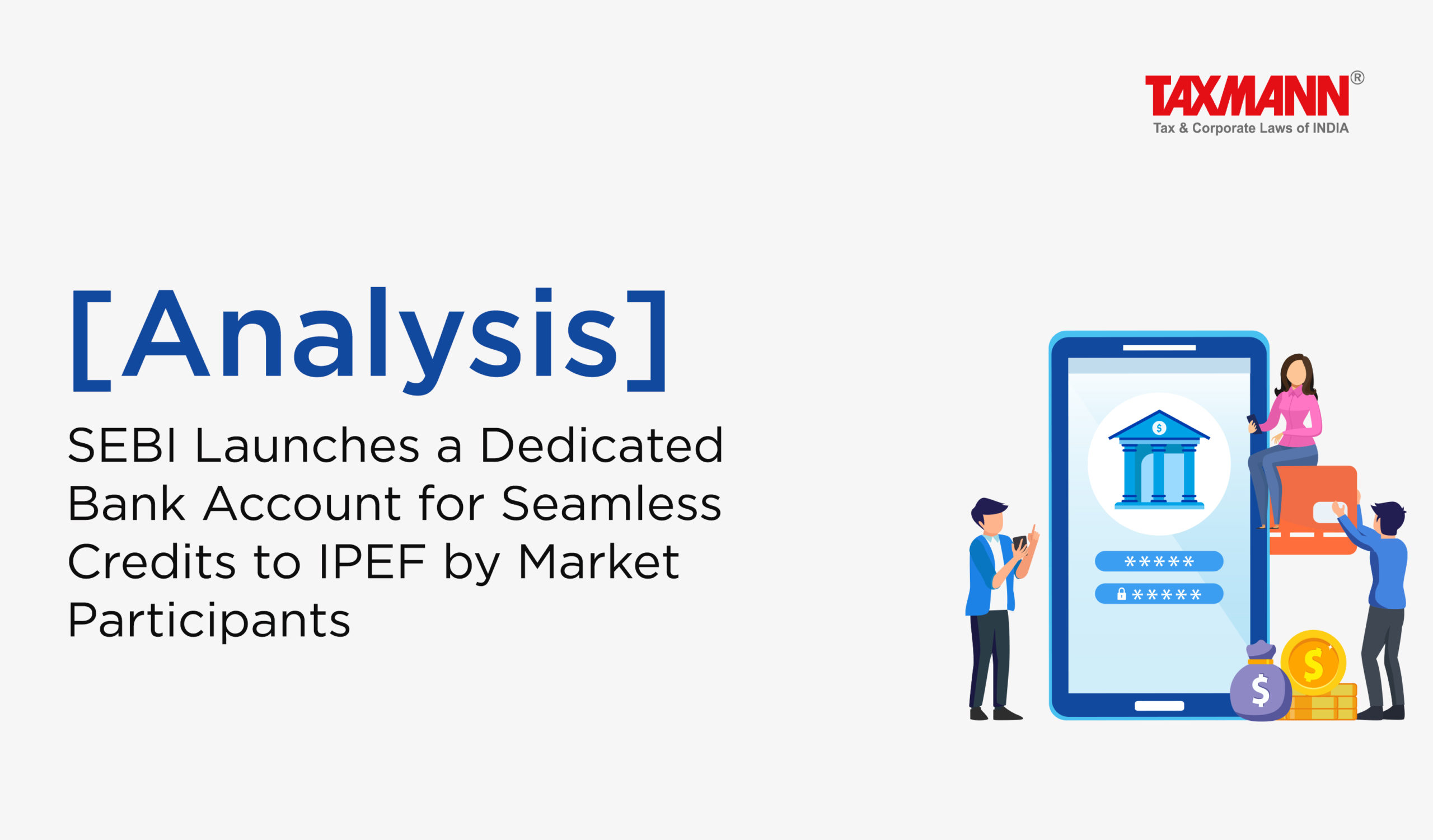[Analysis] SEBI Launches a Dedicated Bank Account for Seamless Credits to IPEF by Market Participants
- Blog|Advisory|Company Law|
- 2 Min Read
- By Taxmann
- |
- Last Updated on 25 April, 2024

Table of Contents
- Introduction
- Diverse Payment Options available for funding IPEF
- Details of remitters to be furnished during the payment processing
- Comments
1. Introduction
Earlier, SEBI vide its Circular No. SEBI/HO/ISD/ISD/CIR/P/2020/135 dated July 23, 2020 had prescribed that as per Regulation 4(2) of SEBI (Investor Protection and Education Fund) Regulations, 2009, any amount collected by the listed companies, intermediaries and fiduciaries for violation(s) of CoC shall be credited to the SEBI Investor Protection and Education Fund through online mode or by way of demand draft in favour of the Board.
Currently, SEBI vide its Circular No. SEBI/HO/GSD/TAD/P/CIR/2023/149 dated September 04, 2023 has modified the mode of payment for crediting the amount to the SEBI Investor Protection and Education Fund (SEBI IPEF).
SEBI has introduced a new bank account to streamline payments from market participants to SEBI IPEF. Pertaining to this, a link has been made accessible in the Homepage of SEBI website (www.sebi.gov.in) under the head “Click here to make payment to SEBI IPEF”.
2. Diverse Payment Options available for funding IPEF
The provided link allows the remitter to complete the payment using any of the diversified methods:
(a) Net Banking
(b) NEFT/RTGS
(c) Debit Cards
(d) UPI
3. Details of remitters to be furnished during the payment processing
While making the payment via the above link, the remitter shall furnish the requisite information :
(a) Name of the Payer
(b) PAN
(c) Mobile Number
(d) E-mail ID
(e) Purpose behind the payment
(f) Amount to be paid
4. Comments
The transition from SEBI’s previous requirement of online mode or demand drafts to now exclusively accepting contributions through online mode via a newly opened bank account simplifies the payment process, promoting greater efficiency and accessibility for market participants. This change reflects SEBI’s commitment to embracing digital payment methods and may lead to increased contributions to the Investor Protection and Education Fund (IPEF).
Disclaimer: The content/information published on the website is only for general information of the user and shall not be construed as legal advice. While the Taxmann has exercised reasonable efforts to ensure the veracity of information/content published, Taxmann shall be under no liability in any manner whatsoever for incorrect information, if any.

Taxmann Publications has a dedicated in-house Research & Editorial Team. This team consists of a team of Chartered Accountants, Company Secretaries, and Lawyers. This team works under the guidance and supervision of editor-in-chief Mr Rakesh Bhargava.
The Research and Editorial Team is responsible for developing reliable and accurate content for the readers. The team follows the six-sigma approach to achieve the benchmark of zero error in its publications and research platforms. The team ensures that the following publication guidelines are thoroughly followed while developing the content:
- The statutory material is obtained only from the authorized and reliable sources
- All the latest developments in the judicial and legislative fields are covered
- Prepare the analytical write-ups on current, controversial, and important issues to help the readers to understand the concept and its implications
- Every content published by Taxmann is complete, accurate and lucid
- All evidence-based statements are supported with proper reference to Section, Circular No., Notification No. or citations
- The golden rules of grammar, style and consistency are thoroughly followed
- Font and size that’s easy to read and remain consistent across all imprint and digital publications are applied






